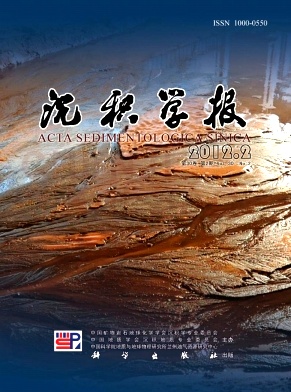Lithology and Origin Analysis of Sublacustrine Hydrothermal Deposits Characterized by Analcime, Sanidine, Dolomite, Quartz, etc. in Lucaogou Formation, Middle Permian, Santanghu Basin, Northeast Xinjiang, China
- Publish Date: 2012-04-10
-
Key words:
- Santanghu Basin /
- Middle Permian /
- continental rift basin /
- analcime, geochemistry /
- sublacustrine hydrothermal fluid /
- hydrothermal sedimentary rocks /
Abstract: Santanhu Basin, located in northeast of Xinjiang, China, was developed a contenental rift basin from Late Carboniferous to Middle Permian. On the outcrop and the drilling cores of the basin, layers of sublacustrine hydrothermal deposits from which six of them were sampled, were found in the thick mudstones in Lucaogou Formation(P2l), Middle Permian. The hydrothermal samples can be divided into two types: the first type is formed of analcime, sanidine, orthoclase, dolomite and ankerite.The carbonates were detected of concentrating iron and manganese. The second type is formed of analcime, quartz, and carbonates. Most analcime was observed to be xenomorphic block or amorphous gelatinoid otherwise from automorphic tetragonaltrisoctahedron under the SEM. Major elements of all samples were characterized as being rich in SiO2, Al2O3,Na2O,and poor in TiO2. Trace element of the samples show enrichemnt of highly incompatibility elements, such as Ba, Rb, K, Ta, Sr, Zr and Hf, and are lack of Th, Nb, and Ti relatively. The ratios of Sr/Nd = 44.73~831.78, Nb*=0.02~0.17. ΣREE= 7.33 ~20.619 μg/g, LaN/YbN=2.50 ~16.00, LREE/HREE=4.77~11.20. δEu varies from0.6 to 0.99 which shows negative anomalism to primitive mantle , however, δCe value which varies from 0.96 to 1.04 shows the similarity to primitive mantle. The major and trace elements (includes REE) reveal the distinct differences with the basalts and trachytoids of Permian in the same basin, and also disagree with the average value of Upper Crust. 87Sr/86Sr = 0.705 118~0.706 438, 143Nd/144Nd =0.512454~0.512713,εNd=0.81~3.84. Isotope composition indicates that mantle materials may participate in the hydrothermal fluid with which the hydrothermal minerals were deposited. By the analysis of the lithology, geochemistry, and Sr, Nd isotope, the characteristics of the samples suggest that they are an assemblage of hydrothermal rocks which are related to the hot springs exhalation at the lake bottom in Santanghu continental rift basin. Besides the Crust and meteoric components, the hydrothermal fluid of the rocks was probabely composed of the substance sourced from deep earth.
| Citation: | Lithology and Origin Analysis of Sublacustrine Hydrothermal Deposits Characterized by Analcime, Sanidine, Dolomite, Quartz, etc. in Lucaogou Formation, Middle Permian, Santanghu Basin, Northeast Xinjiang, China[J]. Acta Sedimentologica Sinica, 2012, 30(2): 205-218. |






 DownLoad:
DownLoad: